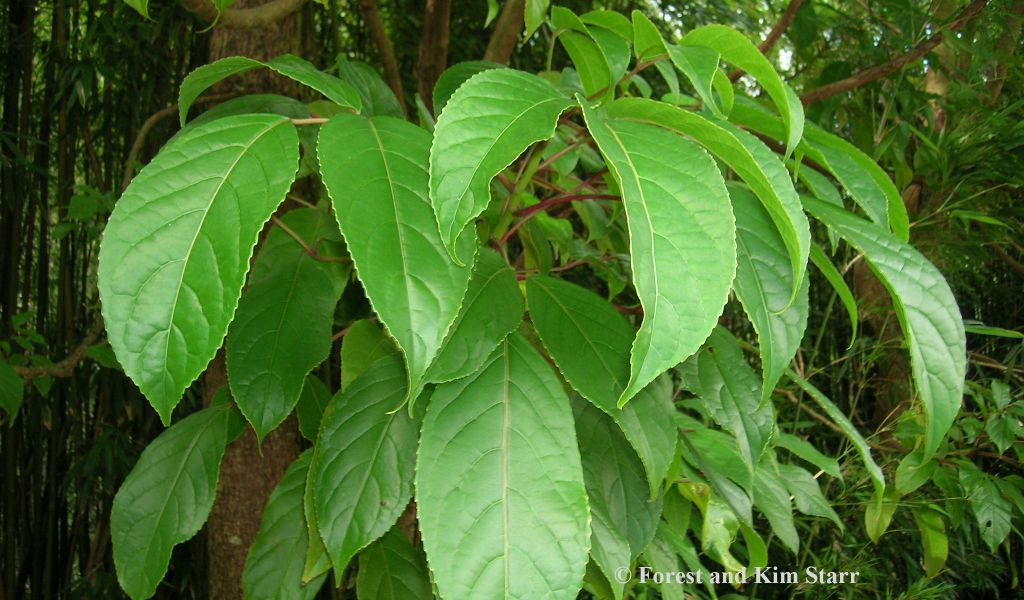ຕົ້ນຂົມຟາດ / Java cedar
APA 6th ed. ຕົ້ນຂົມຟາດ / Java cedar. (2021, February 18). Retrieved from https://www.phakhaolao.la/kb/0001071
MLA 8th ed. ຕົ້ນຂົມຟາດ / Java cedar. Pha Khao Lao, 18 February 2021, https://www.phakhaolao.la/kb/0001071.
Chicago 17th ed. Pha Khao Lao. 2021. "ຕົ້ນຂົມຟາດ / Java cedar." Published February 18, 2021. https://www.phakhaolao.la/kb/0001071.

Andrachne trifoliata Roxb.
Bischofia cummingiana Decne.
Bischofia javanica var. lanceolata Müll.Arg.
Bischofia javanica var. oblongifolia (Decne.) Müll.Arg.
Bischofia javanica var. toui (Decne.) Müll.Arg.
Bischofia leptopoda Müll.Arg.
Bischofia oblongifolia Decne.
Bischofia roeperiana Decne.
Bischofia toui Decne.
Bischofia trifoliata (Roxb.) Hook.
Microelus roeperianus (Decne.) Wight & Arn.
Phyllanthus gymnanthus Baill.
Stylodiscus trifoliatus (Roxb.) Benn.
ອັງກິດ: Java cedar ແລະ bishop’s wood.
ຈີນ: 史风木, 惊呆了, 秋楓, 秋枫 ແລະ 杨牧.
ມຽນມາ: aukkyu, aukkywe, hka-shatawi, kywe-tho, po-gaungsa, tayok-the, ye-padauk ແລະ yepadon.
Trees to 40 m tall, to 2.3 m d.b.h., evergreen; stem straight, branching lower; bark gray-brown to brown, ca. 1 cm thick, with red latex; branchlets glabrous. Leaves palmately 3(-5)-foliolate; stipules membranous, lanceolate, ca. 8 mm, caducous; petiole 8-20 cm; terminal petiolule 2-5 cm, lateral petiolules 5-20 mm; leaflet blades ovate, elliptic, obovate, or elliptic-ovate, 7-15 × 4-8 cm, papery, sparsely pubescent only on nerves, glabrescent, base broadly cuneate to obtuse, margins with 2 or 3 teeth per cm, apex acute or caudate-acuminate. Plants dioecious. Inflorescence axillary, paniculate; male peduncle 8-13 cm, puberulent to glabrous, female peduncle 15-27 cm, pendent. Male flowers to 2.5 mm in diam.; sepals membranous, semiorbicular, adaxially concave, ladle-shaped, abaxially puberulent outside; filaments short; pistillode small, peltate, pubescent. Female flowers: sepals similar to male but oblong-ovate, margins membranous; ovary smooth, glabrous, 3- or 4-locular; styles 3 or 4, linear, entire. Fruits globose or subglobose, 6-13 mm in diam., brownish. Seeds oblong, ca. 5 mm
Young soft leaves - raw or cooked. Eaten as a vegetable. Eaten in salads or used as a condiment. The brown, reddish, or blue-black fruit is fleshy, around the size of a pea and in three segments. The plant has been shown to have antiulcer, anthelmintic and antidysenteric activities. The fresh bark is used to treat aching stomachs. The sap of the bark, mixed with lime, is used to treat sore feet. The crushed leaves are rubbed onto an aching stomach. Agroforestry Uses. The tree is used for reforestation and is often intercropped in traditional agriculture. In India, it is considered to be an excellent shade tree in coffee and cardamom plantations. The tree is planted as a pioneer species in northern Thailand in reforestation projects to restore native woodland - it is planted in degraded woodland and open areas in a mix with various other species that all have the ability to grow fast; produce dense, weed-suppressing crowns; and attract seed-dispersing wildlife, particularly birds and bat. A red dye obtained from the bark is used to stain rattan baskets. A brown dye obtained from the inner bark is used to color tapa bark cloth. The bark contains about 16 % tannin that is employed in the toughening of nets and ropes. The heartwood is purplish-brown to reddish-brown and is sharply differentiated from the narrow, pale brown to pale reddish-brown sapwood. The wood is medium-weight and moderately hard. The grain is generally interlocked; texture moderately fine to rather coarse and even; wood surface dull to slightly glossy. Fresh wood smells of vinegar. The wood is susceptible to Lyctus and dry-wood termite attack, longhorn and ambrosia beetles as well as wood-rotting fungi. The wood is used for general construction (beams, posts), bridges, decking, sleepers, mining props, flooring, interior finish, veneer, plywood, implements, carving etc. The tree is a potential source of long fibers for pulp and paper production. Although the wood is not suitable as fuelwood, it is used for charcoal production.
Infromation from: Useful Tropical Plants
